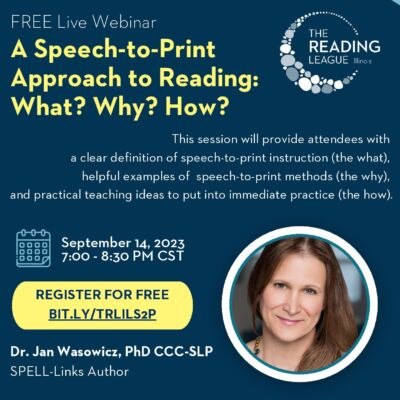My read of the research data is that repeated reading (RR) in itself is not effective as a way to improve fluency and comprehension for new/untrained texts (that is, text that wasn’t trained/read repeatedly).
The studies that provide strong levels of evidence, that is, randomized-control studies and meta-analyses (i.e., studies of studies) find that RR doesn’t improve children’s oral reading fluency (ORF) or comprehension of new text, as compared to other instruction approaches of similar dosage.
This is not to say that RR will be completely ineffective for any given student, but overall, the data don’t support RR as an evidence-based practice as compared to similar amounts of time invested on processes that target that child’s underlying areas of difficulty. The data also indicate that that students don’t particularly enjoy RR, which is important.
The Chard and colleagues systematic review looks at the number of high-quality single-subject and experimental studies that find evidence for RR in students with learning disabilities; in both types of studies, there were insufficient numbers of rigorous studies that meet existing criteria for suggesting RR as an evidence-based practice. This paper gives a good summary of reading fluency, as well.
The Hammerschmidt-Snidarich (2019) paper uses a randomized-control design with about 40 diverse 2nd and 3rd graders who were reading below grade-level benchmarks. The authors made sure that children assigned to RR or a continuous reading (CR, reading each passage once) condition read the same amount of words. The groups didn’t differ in their general ORF or comprehension before training, nor after training! The RR group who got to read the same passages each 3 times did better (large, significant effect size of 0.99) at answering questions about that passage than the children who read three separate passages and had just one exposure from which to answer questions, which is understandable! Importantly, the children in the CR rated their enjoyment of the intervention MUCH higher; those in the CR intervention “were over eight times more likely to rate their intervention positively than were students in the RR intervention.”
What does this mean? The authors sum it up well: “RR resulted in greater passage‐specific comprehension, which might better support students who are reading to understand a difficult concept. Reading a passage multiple times could support their comprehension of difficult material and acquisition of vocabulary. On the contrary, CR provides more exposure to a wider range of vocabulary and concepts because a greater volume of unique text is being read. Students also preferred CR, and their enjoyment of the intervention might serve to build their motivation for reading, even beyond the scope of the intervention (Cox & Guthrie, 2001).” Another caveat is that various doses (number and time of sessions) weren’t studied here, but there isn’t strong reason to think that dosage would change this.
Note that a meta-analysis from Therrien (2004) suggests that RR leads to gains in comprehension and fluency on average, but doesn’t calculate statistical significance and doesn’t compare RR to another intervention.
From my experience working 1:1 with high school-age students, occasional RR does let the student experience what it means to be a fluent comprehending reader; I see RR as a tool for occasional use that doesn’t remediate reading difficulties itself, but helps students “get the feeling” of reading relatively more difficult texts with confidence. Overall, using evidence-based practices to work on foundational skills is the most important, and then bringing in texts that the student finds interesting and engaging to read (perhaps using RR when these are above their level) is an occasional support to this. To reiterate, I have no financial or other investment in this or any approach, just in implementing best practices.
References:
Hammerschmidt‐Snidarich, S. M., Maki, K. E., & Adams, S. R. (2019). Evaluating the effects of repeated reading and continuous reading using a standardized dosage of words read. Psychology in the Schools, 56(5), 635-651.
https://onlinelibrary.wiley.com/doi/pdf/10.1002/pits.22241?casa_token=GCVzBJd5jC8AAAAA:mUCui-Nw8btgwTOiqGFDjYDdmDgrjFvFcY0UakTmCq4WcX6SVjufRusx6Aa4YEaPq5rot_B-QX74-K4
Chard, D. J., Ketterlin-Geller, L. R., Baker, S. K., Doabler, C., & Apichatabutra, C. (2009). Repeated reading interventions for students with learning disabilities: Status of the evidence. Exceptional Children, 75(3), 263-281.
https://citeseerx.ist.psu.edu/document?repid=rep1&type=pdf&doi=7677602d021462500a676c05559b9c557386d197








